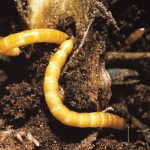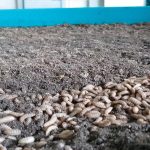
Tag Archives Soil

Confusion remains about soil health
Producers get mixed messages on what they should do to improve their ground

Wireworm survival behaviour unearthed
Wireworms travelled deep into the soil for winter, research out of Atlantic Canada found

Happy trails: Award-winning soil scientist retires
Faces of Ag: After 27 years with Manitoba Agriculture, the respected soil fertility specialist has retired

Soil health main focus of cover-croppers
Largest look into practice across Prairies at the farm level shows early adopters satisfied with results

Palliser Triangle: It’s hot and dry — and the next frontier for canola
With crush capacity soaring, canola council looks to the brown soil zone and new heat-tolerant varieties

Closing the phosphorus loop
Municipal wastewater can be a source of valuable nutrients, says soil scientist

From ashes to fly larvae, new ideas aim to revive farm soil
New research aims to take the fight to stave off soil degradation in a promising new direction

Soil acidity a growing issue
Over time a natural chemical reaction to nitrogen can cause an acidic band to develop

The making of a cover crop mix
How ‘multi-species’ should a multi-species mix get?

Comment: How roots are shaped for success
The amazing development of root shape and why it could help protect crops from climate change


